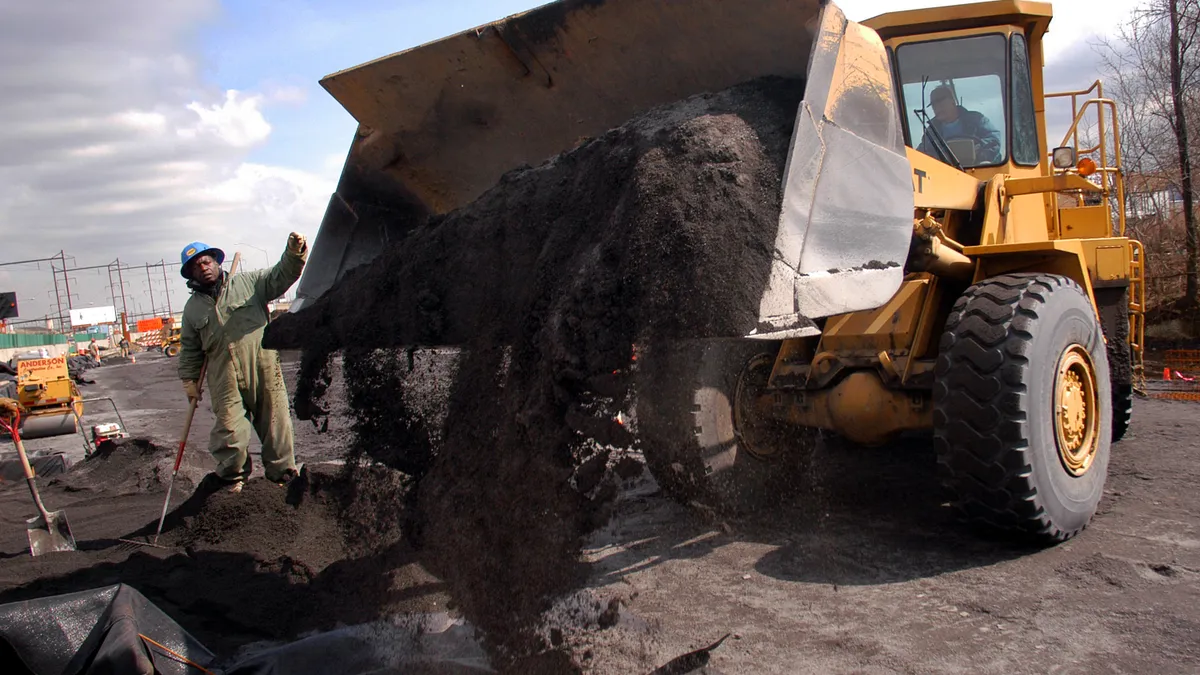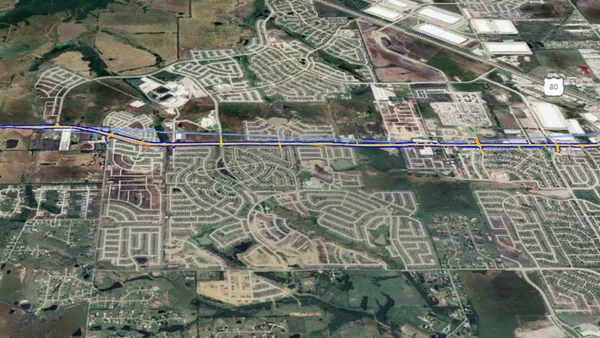Dive Brief:
- Excavations for infrastructure improvements are generally disruptive and costly, and new analysis from management consulting firm McKinsey found that bundling projects that require digging in the same area has multiple benefits, like allowing builders to better manage supply chain challenges and worker shortages.
- This “dig-once” approach seeks to mitigate disruption and maximize return on investment by coordinating multiple infrastructure projects simultaneously. For example, adding more lanes to a highway requires excavation, as does laying new broadband cables. Rather than dig up the road twice, jurisdictions could dig once to accommodate both projects.
- This coordinated method would also help maximize the benefit of the recent surge in federal funding for infrastructure, according to McKinsey, and create fewer headaches for the public to boot.
Dive Insight:
With the passage last year of the Infrastructure Investment and Jobs Act, as well as road building and resilience funding from the recent Inflation Reduction Act, states’ and jurisdictions’ infrastructure coffers are relatively flush. This presents an opportunity for localities to get even more value by bundling multiple projects and streamlining infrastructure work.
Harmonizing broadband and federal highway projects could reduce costs by up to 33% in urban areas and 16% in rural ones, per a Government Accountability Office analysis. A 2020 Fiber Optic Sensing Association study found that coordinating broadband projects with utility and transportation excavations, rather than conducting a separate dig, is about 10 times cheaper. This approach can help builders more effectively use available materials and labor, and advance projects amid shortages.
Here are five strategies the authors identified to effectively bundle infrastructure work:
- Designate an infrastructure coordinator to align projects and programs and identify areas of collaboration.
- Create a platform or forum to enhance coordination between the state and private sectors, and to keep communication flowing between the various entities.
- Feed in data on labor and material shortages to better inform project planning.
- Put a single person in charge of bundled projects in their design and build/construction phases to ensure they can be done together.
- Plan early and map projects out. Geospatial analysis can illustrate where funding is dedicated, and identify areas of overlap and potential for dig-once approaches.
Sophisticated digital tools such as advanced modeling could also be harnessed to improve project design and delivery, according to the McKinsey analysis, but even a central information repository as simple as a shared spreadsheet can enhance project planning, prioritization and delivery.
Portals, coordination policies help surmount challenges
This streamlined approach to excavations requires coordination across multiple agencies and entities, and doing so is not without difficulty. Some of the most common challenges, according to the report, include difficulty in coordinating and implementing projects across different timelines and agencies, as well as rigidity in projects’ budget and funding.
Nonetheless, multiple jurisdictions have implemented some form of dig-once policy, including Arizona, Illinois, Maryland, Minnesota and Michigan, according to McKinsey. There are many ways to incentivize cooperation; Michigan, for example, has created a portal that documents infrastructure projects and alerts owners to overlapping efforts. Other DOTs mandate coordination with telecom companies during road construction.
“While coordinating infrastructure projects is not without challenges, the concept is already being proven in several states,” said the report’s authors. “With the nation’s transportation, water, broadband and other systems receiving a once-in-a-generation federal funding boost, dig once could make the process of upgrading infrastructure less painful for the public and deliver bigger benefits down the road.”














